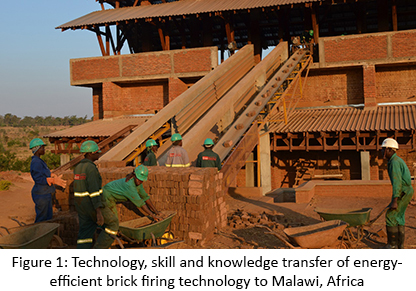|
South-South Cooperation and
its relevance to partnerships
As
per the United Nations definition, South-South Cooperation (SCC) is a
broad framework of collaboration among countries of the South in the
political, economic, social, cultural, environmental and technical
domains. Involving two or more developing countries, it can take place
on a bilateral, regional, intraregional or interregional basis.
Developing countries share knowledge, skills, expertise and resources to
meet their development goals through concerted efforts. When South-South
Cooperation is supported by traditional donor countries or bilateral and
multilateral organisations, it takes the form of Triangular Cooperation
.
India has a rich history of South-South Cooperation for centuries. The
first Indians arrived in South Africa in 1860 to support economic and
business interests. Mahatma Gandhi arrived in South Africa in 1893 to
assist in a civil lawsuit. Traditionally, for decades, the developed
countries have been working closely with neighbouring countries in the
region through developmental assistance. However, the approach has
changed over the years. We have come a long way from developmental
assistance to “developmental partnerships”. These partnerships have been
in the field of education, skilling, business, technology transfer and
environment, to mention a few. Indian universities are partnering with
counterparts in Africa to create capacities of the teachers in imparting
the latest scientific education. India is partnering with the research
community in helping to break new barriers in the field of medicine,
construction, transport etc.
As a country, India has a traditional advantage of being the leader in
SSC due to its rich culture and heritage. This is especially true since
India shares similar culture, traditions, values and geographical
conditions with Africa, Asia and even Latin America, especially the
Caribbean. Thus, SSC is more relevant to India when it comes to work
with like-minded countries in the global South. India has never believed
in the word “aid” (except in emergencies or natural calamities) but
always nurtured a “valued partnership” with various countries. The main
aim is always to help them in becoming self-reliant. Thus the major
focus has been to build capacities, enhance skills and transfer
technical knowledge and technologies so that the countries become
self-reliant on their own.
The value of SSC has also been both ways. As other countries have
learned from India, we have also gained probably more being associated
in this endeavour. The knowledge gained has helped in refining our
systems and technologies and then supporting “Build Back Better”.
Thus, bilateral partnerships will not be feasible for a North-South
collaboration and thus the concept of “Triangular Cooperation” has
evolved. In Triangular Cooperation traditional donors from the North and
bilateral, multilateral agencies provide financial and technical support
to facilitate development activities between two developing countries in
the South, i.e., one emerging donor country and a beneficiary. Thus,
countries in the EU and Asia-Pacific are supporting India to support
other countries in Africa and Asia.
Development Alternatives Group has been in the forefront of South-South
Cooperation for the last three decades. Most of the initiatives have
been based on a Triangular Cooperation approach. However, the principles
remain the same. Thus, DA Group has been helping neighbouring countries,
i.e., Nepal, Bhutan, Bangladesh, Sri Lanka and Thailand, in transferring
cutting-edge technologies in the field of resource efficiency in
building materials and profitable utilisation of wastes. Similar
activities are also being pursued in the African countries of Malawi,
South Africa, Egypt, Cameroon, Kenya, Uganda and Rwanda in undertaking
feasibility studies and creating a conducive environment for SME and
companies to flourish.
 The
entry point is always the transfer of technologies, for example,
energy-efficient brick firing process, that is, EcoKiln, with its waste-utilising
building materials to create local jobs and generate equal opportunity
employment. In recent times DA Group has been supporting large companies
in adopting low-carbon cements (limestone calcined clay cements or LC3)
through technical testing, feasibility studies and pilot production. To
create enabling markets, DA Group has also been working with national
institutions in the South creating standards for new cements. The
entry point is always the transfer of technologies, for example,
energy-efficient brick firing process, that is, EcoKiln, with its waste-utilising
building materials to create local jobs and generate equal opportunity
employment. In recent times DA Group has been supporting large companies
in adopting low-carbon cements (limestone calcined clay cements or LC3)
through technical testing, feasibility studies and pilot production. To
create enabling markets, DA Group has also been working with national
institutions in the South creating standards for new cements.
We hope that the “bilateral pathway”
created and demonstrated by DA Group can set an example for other
organisations to follow and will also help in stimulating the minds of
the global North and South in creating more demands and supporting
opportunities.■
Soumen Maity
smaity@devalt.org
Back to Contents
|
 The
entry point is always the transfer of technologies, for example,
energy-efficient brick firing process, that is, EcoKiln, with its waste-utilising
building materials to create local jobs and generate equal opportunity
employment. In recent times DA Group has been supporting large companies
in adopting low-carbon cements (limestone calcined clay cements or LC3)
through technical testing, feasibility studies and pilot production. To
create enabling markets, DA Group has also been working with national
institutions in the South creating standards for new cements.
The
entry point is always the transfer of technologies, for example,
energy-efficient brick firing process, that is, EcoKiln, with its waste-utilising
building materials to create local jobs and generate equal opportunity
employment. In recent times DA Group has been supporting large companies
in adopting low-carbon cements (limestone calcined clay cements or LC3)
through technical testing, feasibility studies and pilot production. To
create enabling markets, DA Group has also been working with national
institutions in the South creating standards for new cements.